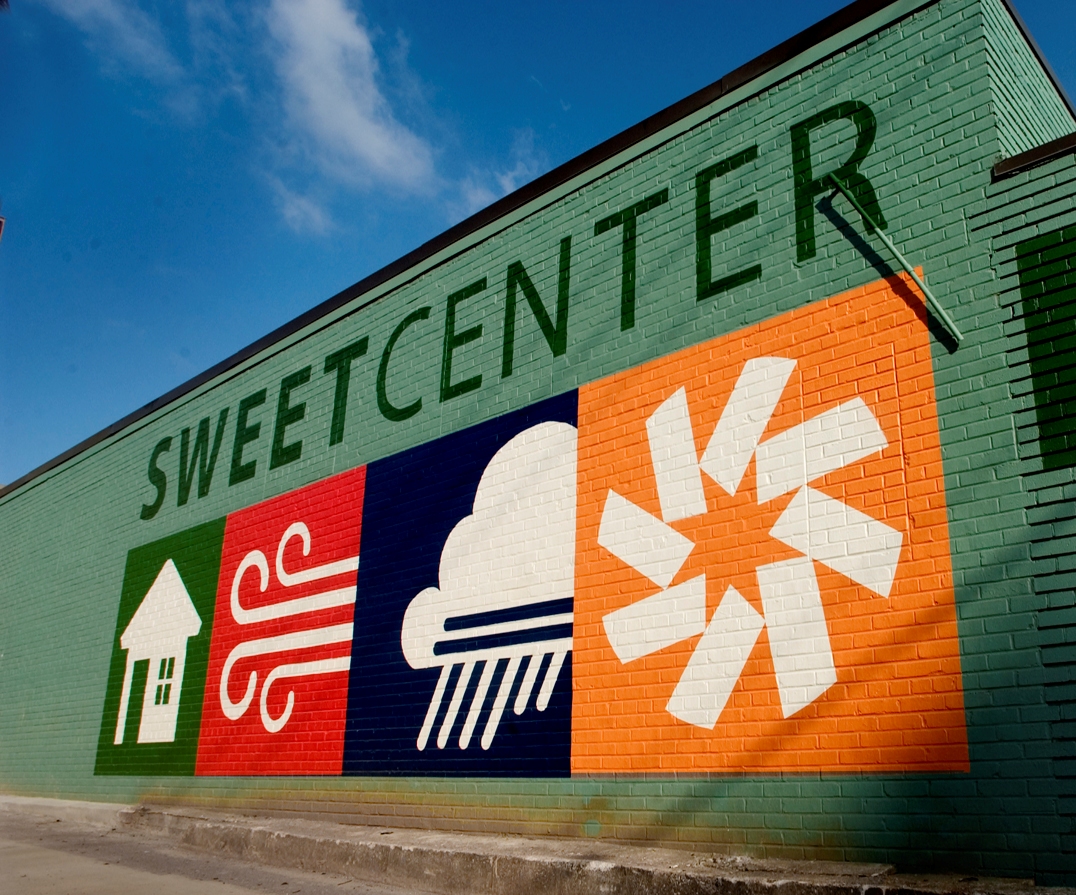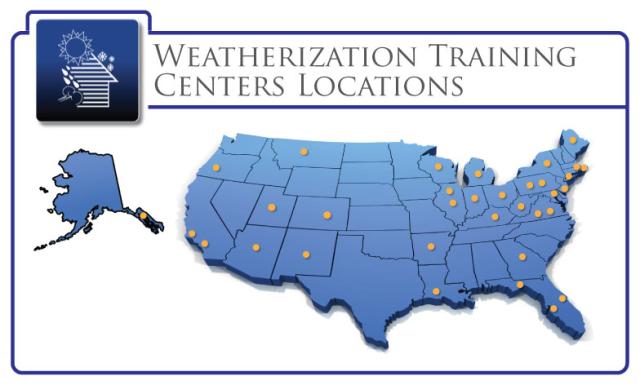
Facilities Can Make a Difference

Atlanta's Southface SWEET Center has lost the look of the diaper laundry and auto body shop it used to be. It houses weatherization and green building training programs and gives space to equipment, classrooms, and demonstration areas.
A prime example of adaptive building reuse, the training center is certified by EarthCraft, a green building certification program in the Southeast region. Qualification for LEED (Leadership in Energy and Environmental Design) certification is a work in progress.
"Students appreciate that we 'walk the walk.' They are impressed that we have taken extra steps to embrace energy- and water-efficiency measures," says Amelia Godfrey, weatherization training associate at the SWEET (Southeast Weatherization and Energy Efficiency Training) Center. The building has light sensors, so rooms darken when not in use. Solar lighting provides a significant portion of the lighting in the classroom. Low-flow fixtures regulate water use in the kitchen and restrooms. All appliances are energy-efficient.
Ms. Godfrey and other staff members serve as technical advisers for Georgia's low-income weatherization program at the SWEET Center. Duct-blaster testing, blower-door testing, and combustion-safety testing are conducted using customized facilities, such as a small house inside the training center. The house has attic space where students can work safely and comfortably. Guiding principles are hands-on and digital learning. "We make sure things are visual and interactive," says Ms. Godfrey about the practical learning opportunities in weatherization techniques and testing protocols.
Some students have taken off-site tours at the main Southface campus, a model for sustainable building practices. These tours, available to the public, showcase off-the-shelf products, materials, and technologies for energy-conserving building practices. The Southface Eco Office reflects environmentally responsible commercial space. The Southface Resource Center showcases more than 100 residential building improvements.
The students' off-site experience expands their knowledge of innovation and design. While they may not be able to replicate all the smart building practices of the Southface campus, they understand the need for advance planning and efficient use of resources. Through their training, students identify the weatherization measures that will have the biggest impact for homeowners.
The SWEET Center has trained more than 700 weatherization professionals in residential and commercial weatherization, home retrofitting, and energy-efficiency techniques benefiting more than 3,300 low-income households.
Marking the Map with WTC

The 34 organizations selected for the Weatherization Training Center (WTC) grant program span the country. They stretch from Alaska to Florida, Maine to California, reaching communities large and small.
Whether in metropolitan areas such as Chicago, Los Angeles, and New York, or in less densely populated locales, such as Williamsport, Pennsylvania; Athens, Ohio; and Christiansburg, Virginia; the organizations are making a substantial impact.
The WTC grant program works toward achieving the mission of the DOE Weatherization Assistance Program (WAP): To reduce energy costs for low-income families, particularly the elderly, people with disabilities, and children, by improving the energy efficiency of their homes, while ensuring their health and safety. WAP was created in 1976 and operates in all 50 states.
Tell Us Your Story
Have you accomplished something to improve the weatherization community, or do you have a suggestion for a story? We want to hear from you. You can send your ideas to sam.daugherty@orise.orau.gov.
Tackling the Tiers of Accreditation
The approval of four new Job Task Analyses (JTAs) by Interstate Renewable Energy Council's (IREC) ISPQ credentialing program will help training centers achieve the goal of instituting programs that will lead to accreditation in compliance with internationally recognized standards. |
 |
"The establishment of the JTAs is the foundation which will bring a new level of quality and consistency to weatherization training programs," says Pat Fox, director of operations, IREC. Letters of Intent are already arriving and completed packets are expected to follow very soon. The job categories are crew chief, energy auditor, quality control inspector, and retrofit installer technician.
"Applicants put a lot of effort into working through the process and fulfilling the requirements," says Jack F. Werner, Jr., executive director, Institute for Sustainable Power, Inc., an organization specializing in global accreditation and certification. He is a qualified assessor/auditor for the American National Standards Institute and a registered ISPQ auditor.
Applications for training programs are set up in three tiers, all in a logical sequence. The first tier focuses on the curricula, tools, and resources. Applicants should review their curricula and syllabi to cross-check and make sure they cover all the key elements of Job Task Analyses, says Mr. Werner. "They really need to create a matrix to match up what they are teaching so that particular course actually does cover the specific field of knowledge in the Job Task Analyses."
The second tier takes a look at the center's commitment to providing quality training and its financial and legal standing. The third tier examines its documented management system. "The third tier is the hardest one," says Mr. Werner. "A lot of folks don't have a quality management system."
A common stumbling block is maintaining continuity in instruction. "It is very critical that instructors have been closely reviewed in terms of qualifications to teach in that field and have practical experience," says Mr. Werner.
The bottom line, says Mr. Werner, is for training institutions to take a comprehensive view of what they are teaching. Are they covering all the skills and knowledge needed for a particular work activity? Do they have the needed tools and equipment?
Consumers will reap benefits because they will have confidence that workers are qualified to install energy efficient equipment according to manufacturer's specifications. "Accreditation lends a lot of professionalism to the whole training program," he says.
Many resources, including ORISE and Mr. Werner, are available to help applicants through the accreditation process. Also, the Weatherization Accreditation Tool, developed by ORISE, will help guide the process. It is an advanced organizer formatted into a grid with crosswalks so all components are in sequence. With the click of a button, printouts show information completed and information still needed for the application. Information about this tool and other accreditation topics will be featured in upcoming E-note issues.
On the Horizon
Regional Train-the-Trainer Workshops
August 1-4, Syracuse, New York
August 22-26 Indianapolis, Indiana
AEA's Multifamily Buildings Conference
August 8-10, Chicago, Illinois
Weatherization Plus Health Conference
August 24-26, Bozeman, Montana
NASCSP Annual Conference
September 20-23, Seattle, Washington
National Wx Training Conference
December 13-15, New Orleans, Louisiana
Not a SharePoint Member?
Go to the site and click the Request Access button to get your user name and password. Click here
Standardized Weatherization Curriculum Available
DOE standardized weatherization curriculum has been loaded on the WTC SharePoint site.
At Your Service
A wealth of information is available to you at the Weatherization Training Centers Listserv and the SharePoint site. If you are not logged in, then you are missing out by not using these valuable resources.
Listserv
It is easy to access Listserv. All you need to do is e-mail or call either:
- Sam Daugherty: Sam.Daugherty@orise.orau.gov or 865 574-5368
- Tony Hupp: Anthony.Hupp@orise.orau.gov or 865 241-6367
They will secure your access so you will be able to retrieve information and updates on many topics.
SharePoint
It is easy to access the SharePoint site. Go to www.orau.gov/wap/wtc and click on Request Access. You will receive an e-mail in two or three days from Mr. Daugherty with instructional steps on how to receive your new password.
If your are currently a SharePoint user and you need to change your password or fogot your password, see the information below:
To change your password:
You may visit https://vision.orau.org/password to change your password at any time.
If you forget your password:
1. Visit https://receivepw.orau.org/
2. Enter your user name as indicated above and answer the three security questions. Press the Submit button once and a new password will be displayed in red text above the Submit button.
3. If you have forgotten your security questions, those can be reset by visiting www.orau.gov/hsc/wca/ResetSecurityAnswers.htm
If your password expires:
Every six months your ORAU/ORISE SharePoint site password will expire. You will receive a notification e-mail with the information you will need to change your password.
Check out the latest episode of Portable 2-Part Foam. In this technical short, watch a demonstration on a lightweight, disposable kit that might be a good alternative to larger set-ups for some jobs.

